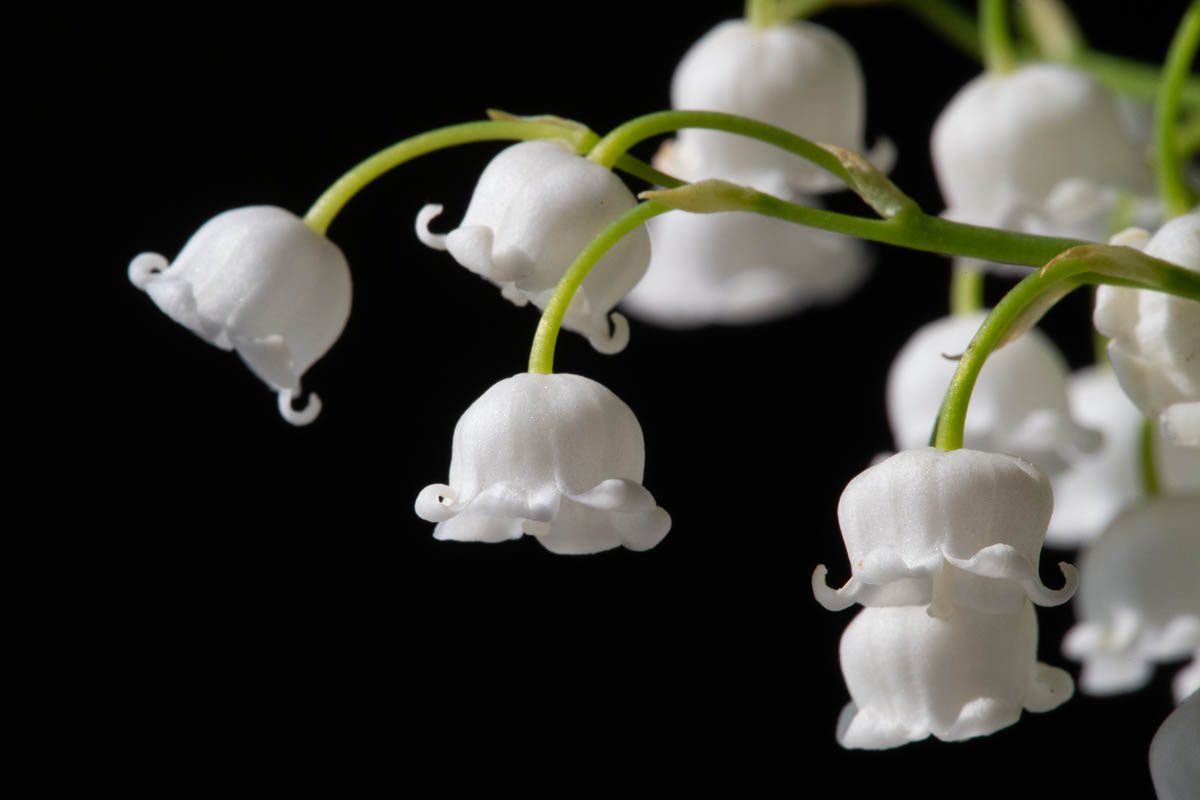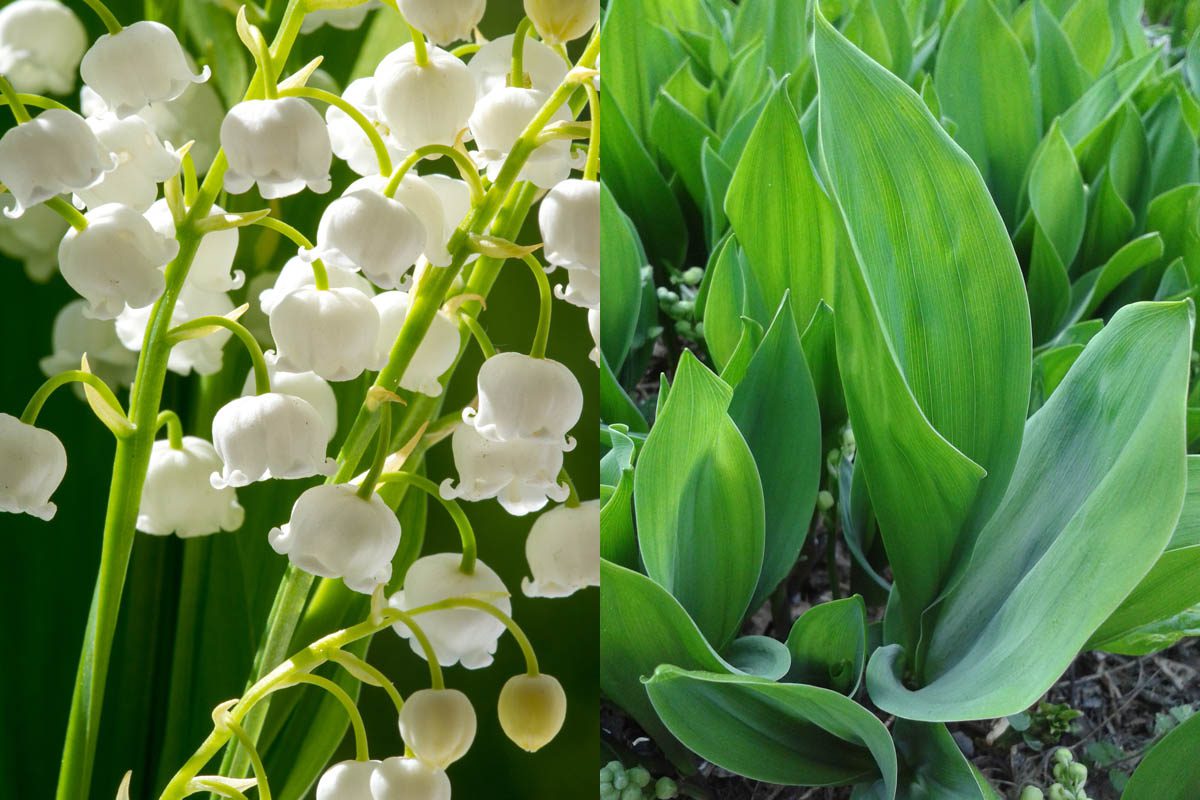What is convallarin?
Convallarin is a crystalline cardiac glycoside found in lily of the valley. Cardiac glycosides are a type of plant toxin that primarily affects the function of the heart. These compounds are characterised by their steroid-like structure (aglycone) bound to a sugar molecule (glycone).
Cardiac glycosides are plant steroids that are derived from the linear triterpene squalene. All cardiac glycosides have one of two ring structures that are connected to the steroid core at a particular point. Plants produce these secondary metabolites to protect themselves against herbivory.
All parts of lily of the valley are toxic, including the leaves, stems, flowers, rhizomes and roots. The highest concentration is in the rhizomes and roots.
What is lily of the valley?
| Family | Asparagaceae |
| Botanical name | Convallaria majalis |
| Common names | Lily of the valley, European lily of the valley, Our lady’s tears, May bells, Mary’s tears |
| Leaf colour | Green |
| Flower colour | White and pink |
| Toxicity | Toxic to humans, dogs, cats |
| Toxic properties | Cardiac glycosides and saponins |
| Toxic parts | All parts (highest concentrations are in the rhizome and roots) |
| Flower meaning | Purity, happiness |
Lily of the valley (Convallaria majalis) is a cardioactive herbaceous perennial in the family Asparagaceae that is native to Europe. Its natural habitat is deciduous and mixed woodlands, where it thrives in cool, moist, and shady environments. The plant was introduced to North America by European colonisers and remains a popular ornamental plant. Lily of the valley has since become naturalised in the northeastern and north-central regions of the United States, as well as in eastern Canada, where it can be found growing in shaded, moist woodland areas.
Lily of the valley is a popular garden plant, that is used as a ground cover in shady spots. It is extremely easy to take care of and is resistant to almost all pests and diseases. The plant prefers well-drained, humus-rich, and slightly acidic to neutral soils. Lily of the valley spreads easily by rhizomes known as ‘pips‘, forming a dense mat.
The attractive and highly fragrant nodding blooms are frequently used in wedding bouquets and in perfumes and scented products. Catherine, Princess of Wales used lily of the valley in her wedding bouquet.
Convallarin is only one of the 40 cardiac glycosides found in lily of the valley. Convallatoxin is considered the most potent, with similar properties to as digoxin (in foxglove) and ouabain (in climbing oleander). Ingestion may occur when the leaves of lily of the valley are mistaken for wild garlic (Allium ursinum), which has a similar appearance but is edible.
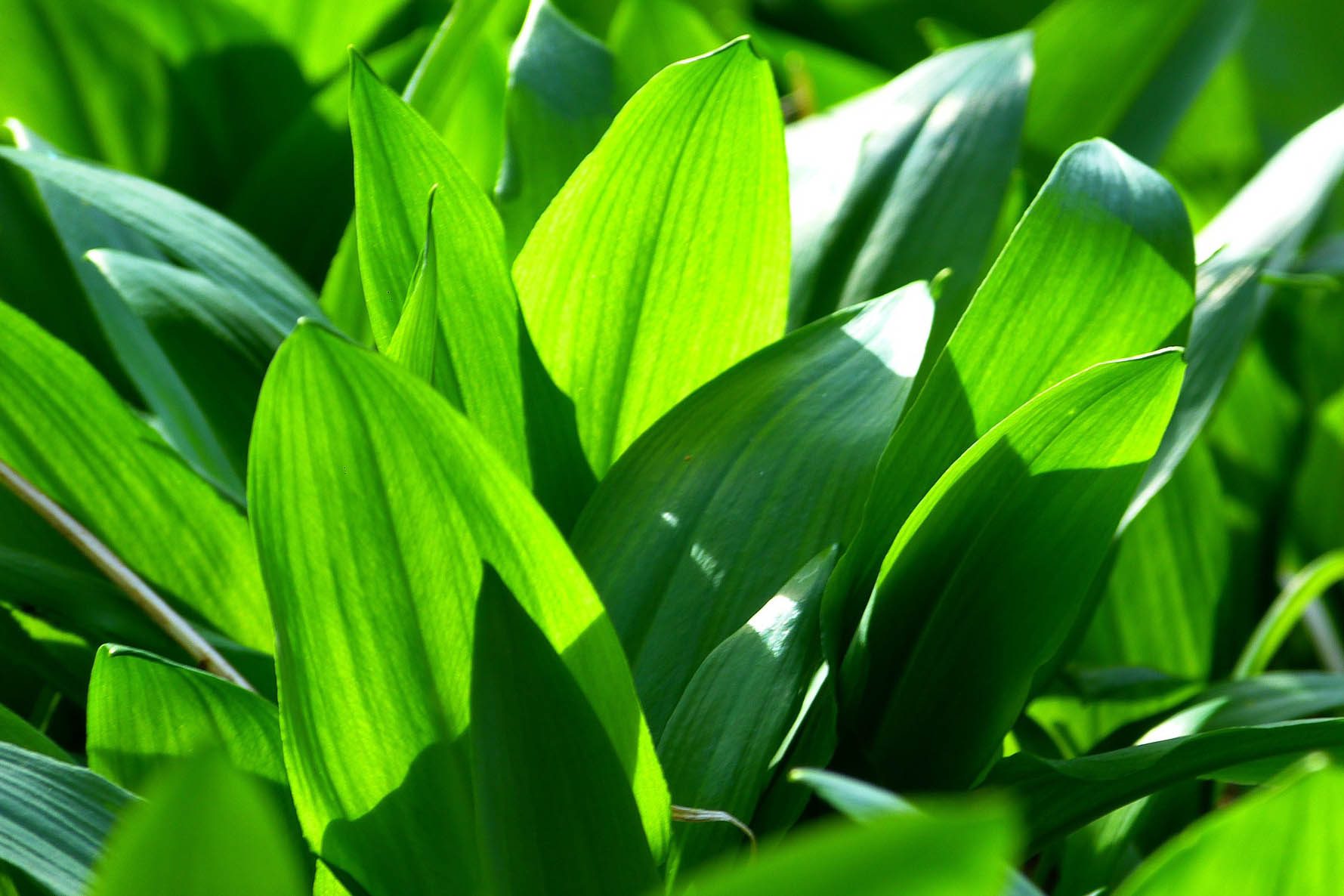
In addition to cardiac glycosides, lily of the valley also contains saponins. Saponins are naturally occurring compounds characterised by their amphiphilic structure (a molecule that has both hydrophilic and hydrophobic properties) that allows them to form soapy froths when mixed with water. Ingestion generally leads to gastrointestinal symptoms such as nausea, vomiting and diarrhea.
Lily of the valley is the national flower of Finland and Serbia.
Identification
Flowers:

Lily of the valley produces nodding, bell-shaped blooms from early to mid-spring. The flowers grow on arching stems 15 – 30 tall with one or two leaves and a raceme. A raceme is a type of inflorescence (a cluster of flowers arranged on a stem). In a raceme, flowers are attached directly to the main stem, called the rachis, by individual stalks known as pedicels. White is the most common colour, however, there is a pink variety that is sometimes available.
Berries:
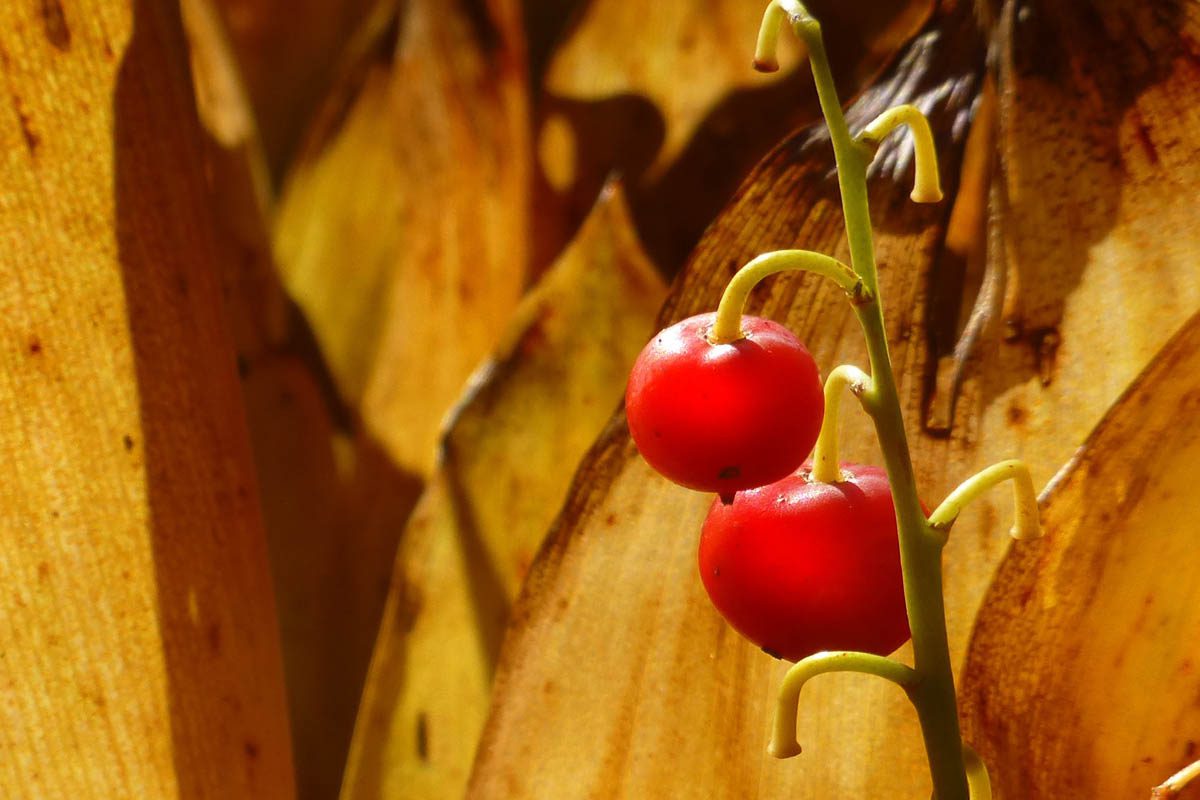
Small, vibrant red-to-orange berries that develop from the dainty, bell-shaped flowers in late summer and early autumn, are visually alluring and add a pop of color to the plant’s elegant, arching stems.
Leaves:
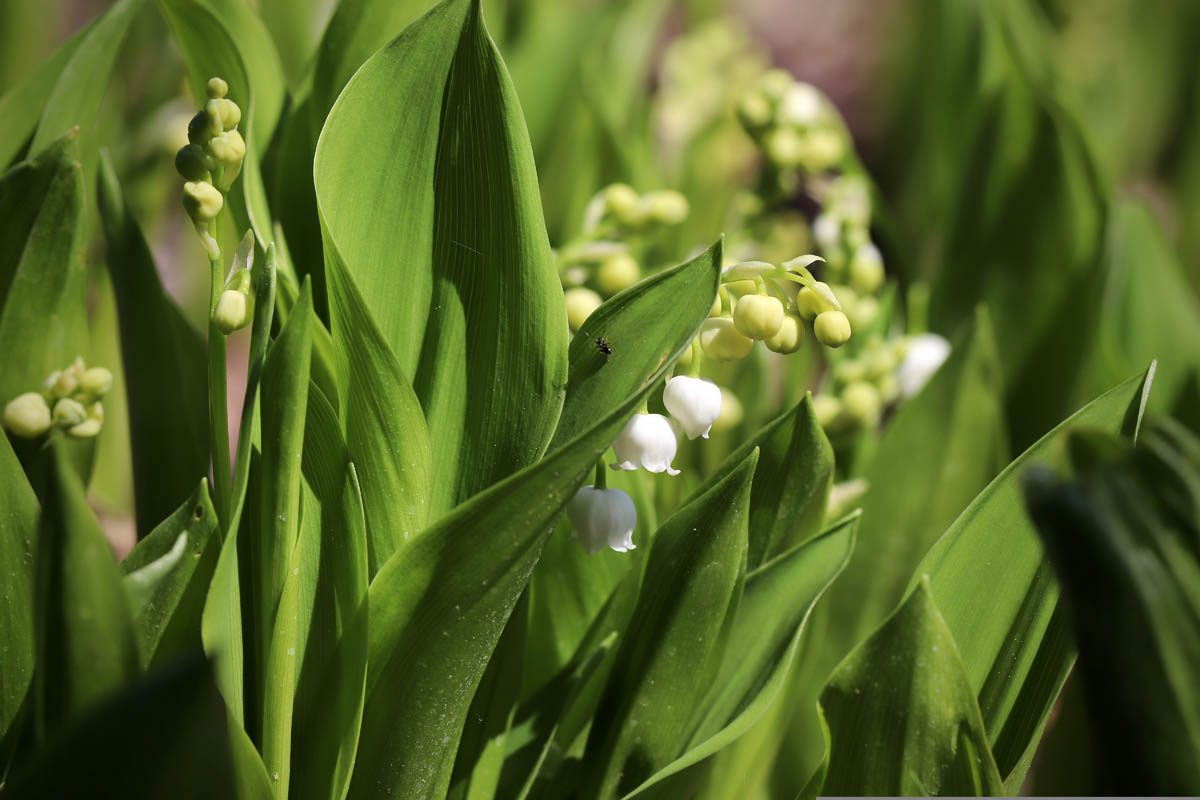
The upright leaf blades are 10 – 20 cm long and 2.5 – 5 cm wide with an elongated, elliptical or lanceolate shape. The edges of the leaves are smooth, and their surfaces are glossy and slightly veined. Leaves emerge from an underground rhizome to form a basal rosette around the flowering stem. Typically, they appear in pairs, with each leaf connected to the stem by a sheath-like base that is described as ‘clasping‘.
Use in herbal medicine
Lily of the valley has a long use in traditional medicine to treat cardiac, diuretic, emollient (skin softening) and laxative properties.
Mechanism of action
Convallarin binds to the alpha subunit of the sodium-potassium Na+/K+-ATPase pump located on the outer membrane of cells. The Na+/K+-ATPase enzyme actively transports three sodium ions (Na+) out of the cell and two potassium ions (K+) into the cell. When convallarin binds to the Na+/K+-ATPase pump, it inhibits the enzyme’s activity, reducing its affinity for potassium ions and increasing its affinity for sodium ions. Intracellular sodium levels increase, which causes a decrease in the activity of another ion transporter, the sodium-calcium exchanger (NCX), which typically exchanges one calcium ion for three sodium ions. The increase in intracellular calcium leads to an increase in the force of the contraction of the heart, known as ‘positive inotropic effect’. The increased intracellular calcium also stimulates the parasympathetic nervous system, specifically the vagus nerve, which acts to slow down the heart rate.
The heart is the primary target of convallarin, however, the Na+/K+-ATPase pump is also present in other cells in the body at lower concentrations. This means convallarin can also affect other body systems including gastrointestinal and neurological.
While convallarin’s primary target is the heart due to its influence on the sodium-potassium ATPase pump in cardiomyocytes, the ATPase pump is also present in other cell types throughout the body, albeit at lower concentrations. This means convallarin can also affect other organ systems, leading to gastrointestinal and neurological symptoms.
Convallarin stimulates the smooth muscles in the gastrointestinal tract, increasing their contractility and activity. Neurological symptoms are due to convallarin crossing the blood-brain barrier, a highly selective semipermeable barrier formed by specialised endothelial cells lining the brain’s blood vessels, which regulates the passage of substances between the bloodstream and the brain. By inhibiting the sodium-potassium Na+/K+-ATPase pump in neurons, neuronal excitability can develop.
Clinical signs
The toxic effects of lily of the valley ingestion may be over-emphasised. One study found out of 2,639 cases of ingestion, only 6.1% reported symptoms and three showed severe side effects. Having said that, ingestion should be taken seriously and medical care sought. Early intervention can help prevent further absorption and reduce toxicity.
Gastrointestinal
- Anorexia
- Nausea
- Drooling
- Vomiting
- Diarrhea
- Abdominal pain
Cardiac
- Arrhythmia (irregular heartbeat)
- Bradycardia (slow heartbeat)
- Collapse
- Cardiac arrest
Neurological
- Confusion
- Dizziness
- Seizures
- Lethargy
- Headache
- Weakness
First aid
- If you, a family member or a pet have ingested any part of lily of the valley, call your local emergency number or poison control centre. You will be asked about the person’s age, weight, symptoms, and details about what was ingested, including the type of plant, the part consumed, and the estimated amount. Do not induce vomiting unless you are instructed to do so by a healthcare professional.
- Rinse the mouth to remove any remaining plant matter.
- Bring a sample of the plant to help healthcare professionals identify it.
Diagnosis
There is no specific laboratory test to detect convallarin itself. Diagnosis is based on a history of lily of the valley ingestion along with presenting symptoms and a diagnostic workup.
Treatment
There is no antidote to convallarin toxicity and treatment is aimed at the prevention of further absorption as well as managing clinical signs. Symptoms typically last between 1 – 3 days.
- Gastric decontamination: If ingestion was recent, the healthcare provider can induce vomiting to help remove the plant matter from the gastrointestinal tract. This will be followed by the administration of activated charcoal to bind to any remaining plant matter.
- Supportive care: Intravenous fluids may be initiated to treat or prevent dehydration, manage electrolyte derangements and help flush any remaining toxins from the body. Medications such as lidocaine or atropine for arrhythmia.
- ECG monitoring: Healthcare professionals will monitor the heart with an electrocardiogram, which records the electrical activity of the heart.
Julia is a writer and landscape consultant from Wollongong with a love of horticulture. She had been an avid gardener for over 30 years, collects rare variegated plants and is a home orchardist. Julia is passionate about learning and sharing her knowledge of plant propagation and plant toxicology. Whether it’s giving advice on landscape projects or sharing tips on growing, Julia enjoys helping people make their gardens flourish.
